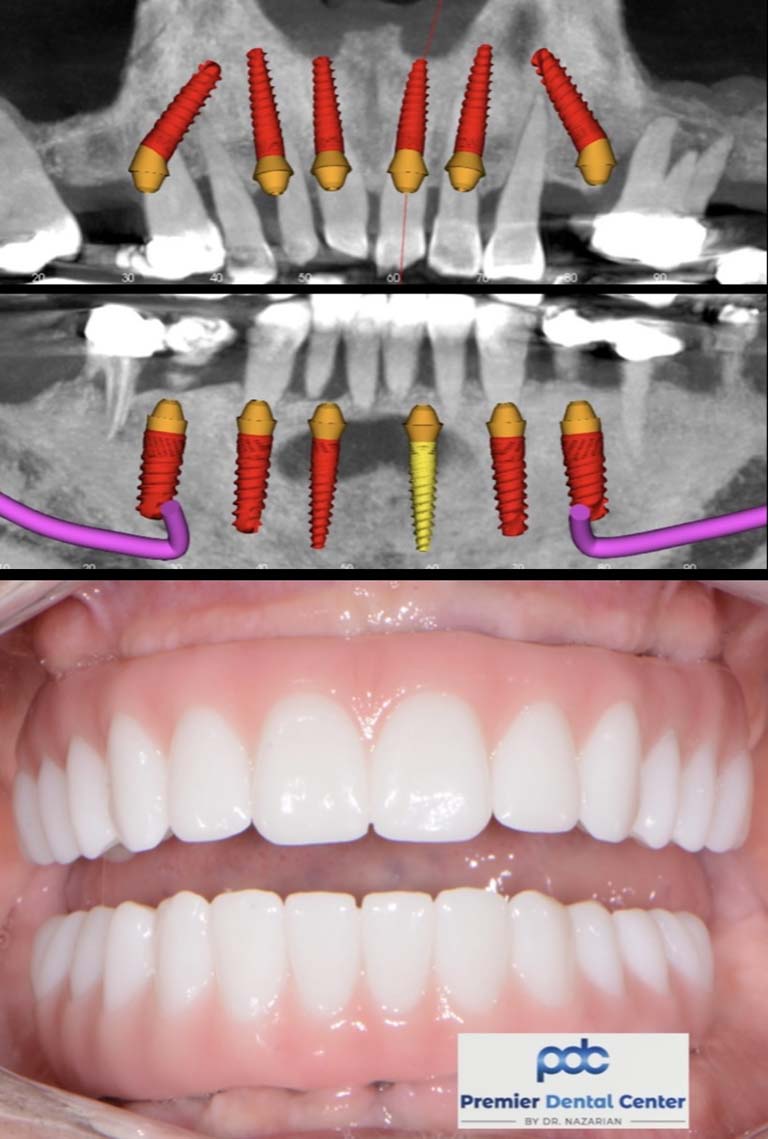All about Dental Sense
Table of ContentsThings about Dental SenseThe Greatest Guide To Dental SenseTop Guidelines Of Dental SenseHow Dental Sense can Save You Time, Stress, and Money.
are clinical devices operatively dental implanted into the jaw to recover an individual's ability to eat or their appearance. They give assistance for synthetic (phony) teeth, such as crowns, bridges, or dentures. When a tooth is lost as a result of injury or condition, a person can experience problems such as rapid bone loss, malfunctioning speech, or modifications to eating patterns that result in pain.Oral implant systems include an oral implant body and oral implant joint and may likewise include an abutment fixation screw. Same day dental implants. The oral implant body is surgically inserted in the jawbone instead of the tooth's root. The oral implant abutment is typically connected to the dental implant body by the abutment addiction screw and extends with periodontals into the mouth to support the attached man-made teeth
(https://www.pubpub.org/user/matthew-music)Framework of The Dental Implant System selecting oral implants, talk with your oral supplier concerning the prospective benefits and threats, and whether you are a candidate for the treatment. Points to think about: Your general wellness is a crucial consider determining whether you are a good candidate for dental implants, the length of time it will certainly take to heal, and how much time the dental implant might remain in place.
Cigarette smoking might affect the healing process and reduce the long-term success of the dental implant. The recovery procedure for the dental implant body might take a number of months or longer, during which time you generally have a momentary abutment instead of the tooth. the dental implant procedure: Carefully adhere to the dental hygiene instructions offered to you by your dental supplier.
Dental Sense for Beginners
Implant failure can cause the need for an additional operation to deal with or change the implant system. Brings back the capacity to chew Brings back aesthetic appearance Assists keep the jawbone from diminishing due to bone loss Protects the health and wellness of the surrounding bone and periodontals Aids keep surrounding (nearby) teeth steady Improves top quality of life Damage to bordering all-natural teeth throughout dental implant placement Injury to the surrounding cells throughout surgical treatment, such as sinus perforation Injury during surgical treatment (as an example, fracture of surrounding jawbone) Inadequate function, such as seeming like the teeth do not attack together generally A feeling that the tooth hangs or twisting in position resulting from a joint screw loosening Implant body failing (looseness of the implant body) as a result of systemic infection, which may be more probable in people with unrestrained diabetes due to neighborhood infection in bone and periodontals supporting the implant body because of postponed healing, which may be most likely in people that smoke Problem cleaning the gum tissues around the dental implant, causing inadequate oral health Untreated gum disease Post-surgical tingling because of nerve impingement or damages Constantly inform healthcare service providers and imaging specialists that you have dental implants prior to any kind of magnetic resonance imaging (MRI) or x-ray treatments.
FDA is not familiar with any damaging events visit this site reported for MRI or x-ray treatments with dental implants. Oral implants systems are usually made of materials that comply with worldwide consensus requirements of the International Company for Standardization (ISO) or ASTM International. These standards have information of what makes a secure product.

A dental implant is a structure that changes a missing out on tooth. With screw-like gadgets, the cosmetic surgeon inserts a dental implant into the jawbone, and it acts as an anchor for a synthetic tooth, called a crown. A gadget called an abutment connects the artificial tooth to the oral implant. The crown is custom-made to fit the individual's mouth and match the color of their teeth.
The Definitive Guide to Dental Sense
Some individuals are not qualified for dental implant surgical procedure. It is for oral specialists to operate on people with: intense illnessuncontrollable metabolic diseasebone or soft tissue condition or infectionIf these issues are fixed, an individual can have the surgery. In, oral surgeons avoid from operating people with: If people with any of the above undergo dental implant surgery, there is a higher threat of the dental implant falling short.

Dental implant surgery is an individualized procedure. It's not the exact same for everybody. However the adhering to gives a general introduction of what you can expect your dental expert, dental cosmetic surgeon, periodontist or prosthodontist to do: Put the dental implant surgically. Offer you time to recover. Affix the post and final crown, bridge or denture.
Next, your specialist will very carefully place the dental implant into your jaw. If your dental implant is near the front of your mouth, your dental practitioner will make a temporary tooth for you to put on until you recover.
Dental Sense Fundamentals Explained
During the recovery stage, your jawbone must fuse to the oral implant. This procedure can take anywhere from three to nine months.
Once your implant heals, your dental professional can connect the abutment (small connector message) and your last reconstruction (crown, bridge or denture). This typically takes concerning one hour to complete and might require a 2nd minor surgical procedure. You shouldn't feel any type of pain during your dental implant procedure due to the fact that your service provider will use medicine to numb your periodontals.